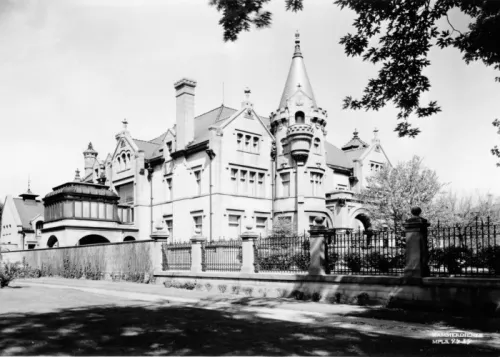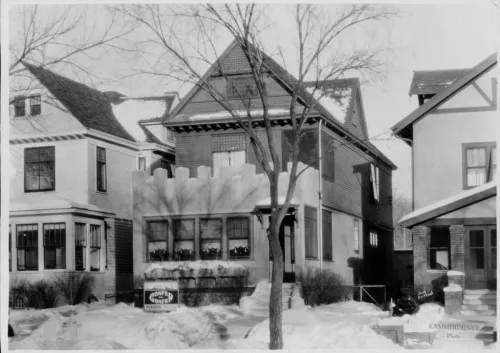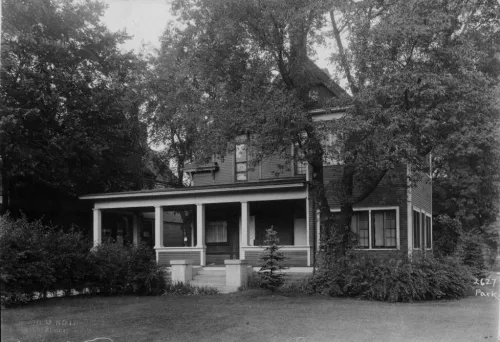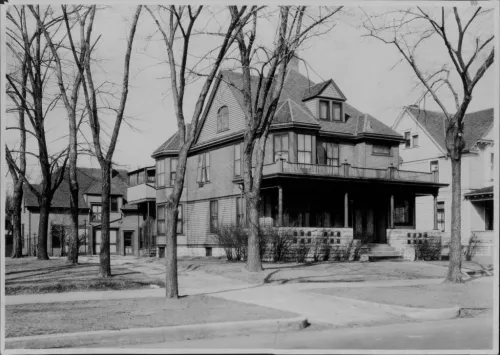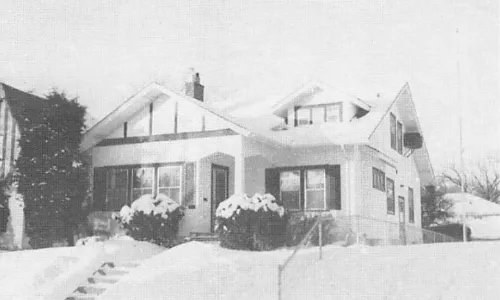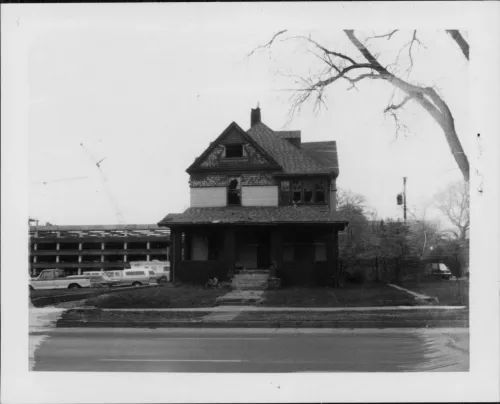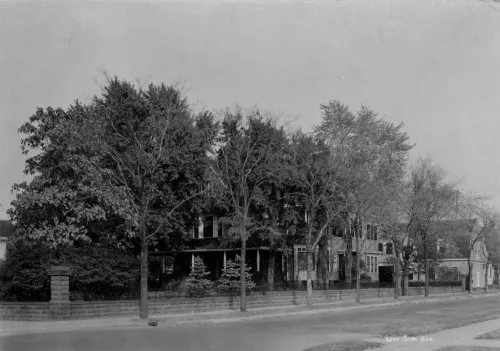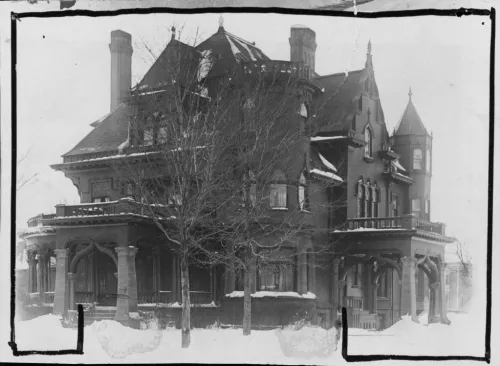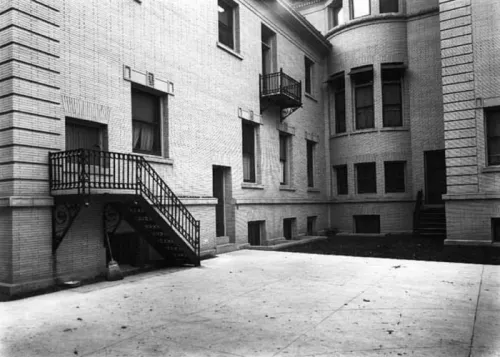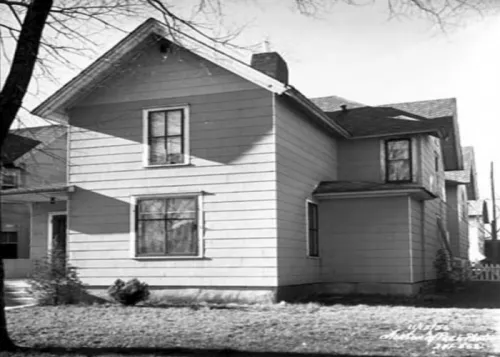Share what you know,
and discover more.
Share what you know,
and discover more.
Aug 26, 1971

-

- Charmaine Bantugan
Swan Turnblad House (American Swedish Institute) - National Register of Historic Places
Statement of Significance: Swan J, Turnblad was the owner of the Svenska Amerikanska Posten, a Swedish language newspaper published in Minneapolis. The circulation of his weekly newspaper by 1897 was said to be the largest of any Swedish language newspaper in the United States, The "Biggest and Best" motto in large type on the front page of his newspaper seemed to be the aim of Mr. Turnblad. He introduced many printing innovations and owned the first electric automobile in Minneapolis. After proposals from at least three architects, Mr. Turnblad initiated construction of his home based on the design of Boehme and Cordella of Minneapolis, The exterior carving and all of the interior plaster decoration were done by Herman Schlink, architectural sculptor Eighteen woodcarvers worked on the mansion dominated by the efforts of Ablin Polasek, a Bohemian trained in Vienna; and the Swiss trained Ulrich Steiner, The Mahogany Association of America considers the African mahogany paneled grand hall to be the finest installation in North America. Mr. Turnblad collected tile fireplaces known as "kakelugnar", The collection is probably the largest outside Sweden, The Swedish fireplace in the breakfast room had won first prize at the Paris Exposition in 1902, Of the than the "kakelugn" in the library, which is of German origin, all were made uniquely different by the Rorstrand Company in Sweden, The Rorstrand Company also made the large urns placed on either side of the fireplace and the formal China with its royal blue and 24 carat gold design. On December 9, 1929, Mr. Turnblad founded the American Institute of Arts Literature and Sciences with his donation of the mansion, the newspaper, his book collection and all artifacts which he collected in his lifetime, Mr. Turnblad said, “It has been my lifelong ambition to foster and preserve Swedish culture in America." Known today as the American Swedish Institute, the building houses an extensive collection of Swedish and Swedish-American exhibits.
Swan Turnblad House (American Swedish Institute) - National Register of Historic Places
Statement of Significance: Swan J, Turnblad was the owner of the Svenska Amerikanska Posten, a Swedish language newspaper published in Minneapolis. The circulation of his weekly newspaper by 1897 was said to be the largest of any Swedish language newspaper in the United States, The "Biggest and Best" motto in large type on the front page of his newspaper seemed to be the aim of Mr. Turnblad. He introduced many printing innovations and owned the first electric automobile in Minneapolis. After proposals from at least three architects, Mr. Turnblad initiated construction of his home based on the design of Boehme and Cordella of Minneapolis, The exterior carving and all of the interior plaster decoration were done by Herman Schlink, architectural sculptor Eighteen woodcarvers worked on the mansion dominated by the efforts of Ablin Polasek, a Bohemian trained in Vienna; and the Swiss trained Ulrich Steiner, The Mahogany Association of America considers the African mahogany paneled grand hall to be the finest installation in North America. Mr. Turnblad collected tile fireplaces known as "kakelugnar", The collection is probably the largest outside Sweden, The Swedish fireplace in the breakfast room had won first prize at the Paris Exposition in 1902, Of the than the "kakelugn" in the library, which is of German origin, all were made uniquely different by the Rorstrand Company in Sweden, The Rorstrand Company also made the large urns placed on either side of the fireplace and the formal China with its royal blue and 24 carat gold design. On December 9, 1929, Mr. Turnblad founded the American Institute of Arts Literature and Sciences with his donation of the mansion, the newspaper, his book collection and all artifacts which he collected in his lifetime, Mr. Turnblad said, “It has been my lifelong ambition to foster and preserve Swedish culture in America." Known today as the American Swedish Institute, the building houses an extensive collection of Swedish and Swedish-American exhibits.
Aug 26, 1971
Swan Turnblad House (American Swedish Institute) - National Register of Historic Places
Statement of Significance:Swan J, Turnblad was the owner of the Svenska Amerikanska Posten, a Swedish language newspaper published in Minneapolis. The circulation of his weekly newspaper by 1897 was said to be the largest of any Swedish language newspaper in the United States, The "Biggest and Best" motto in large type on the front page of his newspaper seemed to be the aim of Mr. Turnblad. He introduced many printing innovations and owned the first electric automobile in Minneapolis.
After proposals from at least three architects, Mr. Turnblad initiated construction of his home based on the design of Boehme and Cordella of Minneapolis, The exterior carving and all of the interior plaster decoration were done by Herman Schlink, architectural sculptor
Eighteen woodcarvers worked on the mansion dominated by the efforts of Ablin Polasek, a Bohemian trained in Vienna; and the Swiss trained Ulrich Steiner, The Mahogany Association of America considers the African mahogany paneled grand hall to be the finest installation in North America.
Mr. Turnblad collected tile fireplaces known as "kakelugnar", The collection is probably the largest outside Sweden, The Swedish fireplace in the breakfast room had won first prize at the Paris Exposition in 1902, Of the than the "kakelugn" in the library, which is of German origin, all were made uniquely different by the Rorstrand Company in Sweden, The Rorstrand Company also made the large urns placed on either side of the fireplace and the formal China with its royal blue and 24 carat gold design.
On December 9, 1929, Mr. Turnblad founded the American Institute of Arts Literature and Sciences with his donation of the mansion, the newspaper, his book collection and all artifacts which he collected in his lifetime, Mr. Turnblad said, “It has been my lifelong ambition to foster and preserve Swedish culture in America."
Known today as the American Swedish Institute, the building houses an extensive collection of Swedish and Swedish-American exhibits.
Posted Date
Mar 10, 2022
Historical Record Date
Aug 26, 1971
Source Name
United States Department of Interior - National Park Service
Source Website
Delete Story
Are you sure you want to delete this story?

